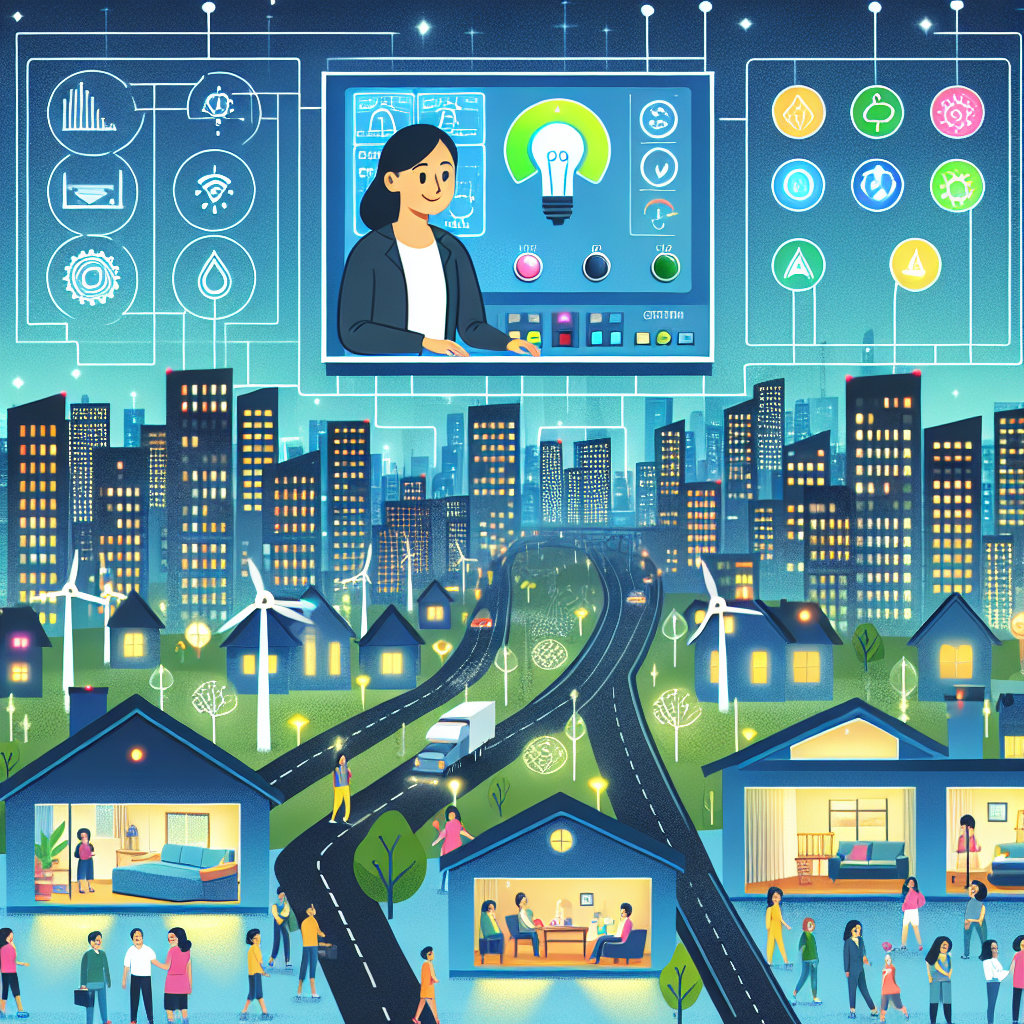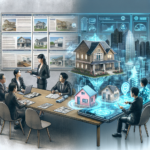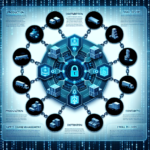-
Table of Contents
“Empowering Tomorrow: Unlocking the Potential of Smart Grid Technology”
Introduction

Smart grid technology represents a transformative approach to electricity distribution and management, integrating advanced digital communication and automation systems to enhance the efficiency, reliability, and sustainability of power networks. By leveraging real-time data and sophisticated analytics, smart grids enable more precise control over energy flows, facilitate the integration of renewable energy sources, and empower consumers with greater visibility and control over their energy usage. This innovative framework not only addresses the growing demand for electricity but also supports the transition to a more resilient and environmentally friendly energy infrastructure. Exploring the benefits of smart grid technology reveals its potential to revolutionize the way we produce, distribute, and consume electricity, ultimately contributing to a more sustainable and efficient energy future.
Enhancing Energy Efficiency with Smart Grid Technology
Smart grid technology is revolutionizing the way we think about energy consumption and distribution, offering a myriad of benefits that enhance energy efficiency. At its core, a smart grid integrates digital communication technology with the existing electrical grid, allowing for real-time monitoring and management of energy flow. This advanced system not only optimizes the delivery of electricity but also empowers consumers to make more informed decisions about their energy use.
One of the most significant advantages of smart grid technology is its ability to reduce energy waste. Traditional power grids often suffer from inefficiencies due to outdated infrastructure and a lack of real-time data. In contrast, smart grids utilize sensors and automated controls to detect and respond to fluctuations in energy demand and supply. This dynamic adjustment helps to minimize energy loss during transmission and distribution, ensuring that electricity is used more efficiently.
Moreover, smart grids facilitate the integration of renewable energy sources, such as solar and wind power, into the electrical grid. These renewable sources are inherently variable, depending on weather conditions and time of day. Smart grid technology can seamlessly balance these fluctuations by storing excess energy during periods of high production and releasing it when demand peaks. This capability not only enhances the reliability of renewable energy but also reduces the reliance on fossil fuels, contributing to a more sustainable energy future.
In addition to environmental benefits, smart grids offer economic advantages for both utilities and consumers. For utilities, the ability to monitor and manage the grid in real-time translates to lower operational costs. Predictive maintenance enabled by smart grid technology can identify potential issues before they escalate into costly repairs or outages. This proactive approach not only saves money but also improves the overall reliability of the power supply.
For consumers, smart grids provide greater control over their energy usage through advanced metering infrastructure (AMI). Smart meters, a key component of AMI, offer detailed insights into energy consumption patterns. Armed with this information, consumers can adjust their habits to reduce energy use during peak hours, potentially lowering their electricity bills. Additionally, some utility companies offer time-of-use pricing, which incentivizes consumers to shift their energy consumption to off-peak times, further enhancing cost savings.
Furthermore, smart grid technology enhances the resilience of the electrical grid. In the event of a natural disaster or other disruptions, smart grids can quickly isolate affected areas and reroute power to maintain service continuity. This rapid response capability is crucial for minimizing downtime and ensuring that critical infrastructure, such as hospitals and emergency services, remain operational.
The implementation of smart grid technology also paves the way for the development of smart cities. By integrating smart grids with other smart infrastructure, such as transportation and water management systems, cities can achieve greater overall efficiency and sustainability. For instance, electric vehicles (EVs) can be charged during off-peak hours when energy demand is low, reducing strain on the grid and promoting the use of clean energy.
In conclusion, smart grid technology offers a comprehensive solution to many of the challenges facing the modern electrical grid. By enhancing energy efficiency, supporting renewable energy integration, providing economic benefits, improving grid resilience, and enabling the development of smart cities, smart grids represent a significant step forward in the evolution of our energy infrastructure. As this technology continues to advance, it holds the promise of a more efficient, reliable, and sustainable energy future for all.
Improving Grid Reliability and Resilience through Smart Grids
Smart grid technology is revolutionizing the way we think about electricity distribution, offering a myriad of benefits that enhance grid reliability and resilience. As the demand for electricity continues to grow, traditional power grids are increasingly strained, leading to frequent outages and inefficiencies. Smart grids, however, are designed to address these challenges by incorporating advanced digital communication and automation technologies. This transformation not only ensures a more reliable power supply but also fortifies the grid against disruptions.
One of the primary advantages of smart grid technology is its ability to detect and respond to issues in real-time. Traditional grids often rely on manual processes to identify and fix problems, which can be time-consuming and prone to human error. In contrast, smart grids use sensors and automated systems to monitor the grid continuously. When a problem is detected, such as a downed power line or equipment failure, the system can quickly isolate the issue and reroute power to minimize the impact on consumers. This rapid response capability significantly reduces the duration and frequency of power outages, enhancing overall grid reliability.
Moreover, smart grids are equipped with advanced analytics that can predict potential problems before they occur. By analyzing data from various sources, such as weather forecasts and equipment performance metrics, smart grids can identify patterns that may indicate an impending failure. This predictive maintenance approach allows utility companies to address issues proactively, preventing outages and reducing maintenance costs. Consequently, consumers benefit from a more stable and dependable power supply.
In addition to improving reliability, smart grids also bolster grid resilience, particularly in the face of natural disasters and other emergencies. Traditional grids are often vulnerable to extreme weather events, which can cause widespread damage and prolonged outages. Smart grids, however, are designed to be more adaptable and robust. For instance, they can integrate distributed energy resources, such as solar panels and wind turbines, which can continue to supply power even if the main grid is compromised. This decentralized approach not only enhances resilience but also supports the transition to renewable energy sources, contributing to a more sustainable future.
Furthermore, smart grids facilitate better communication between utility companies and consumers. Through advanced metering infrastructure, consumers can receive real-time information about their energy usage, enabling them to make more informed decisions about their consumption. This increased transparency fosters a more collaborative relationship between utilities and consumers, encouraging energy-saving behaviors and reducing overall demand on the grid. Additionally, during emergencies, smart grids can provide timely updates and guidance to consumers, helping them stay informed and prepared.
Another significant benefit of smart grid technology is its ability to support the integration of electric vehicles (EVs). As the adoption of EVs continues to rise, the demand for electricity is expected to increase substantially. Smart grids can manage this additional load more effectively by optimizing charging schedules and distributing power more efficiently. This capability not only ensures that the grid can handle the increased demand but also promotes the widespread adoption of EVs, which are crucial for reducing greenhouse gas emissions.
In conclusion, smart grid technology offers a comprehensive solution to the challenges faced by traditional power grids. By enhancing grid reliability and resilience through real-time monitoring, predictive maintenance, and better communication, smart grids ensure a more stable and dependable power supply. Moreover, their ability to integrate renewable energy sources and support the growing demand for electric vehicles positions them as a key component in the transition to a more sustainable and resilient energy future. As we continue to embrace these advancements, the benefits of smart grid technology will become increasingly evident, paving the way for a more reliable and resilient power infrastructure.
Enabling Renewable Energy Integration via Smart Grid Systems
Smart grid technology is revolutionizing the way we think about energy distribution and consumption, particularly when it comes to integrating renewable energy sources. As the world increasingly turns to sustainable energy solutions, the need for a more efficient and reliable power grid becomes paramount. Smart grids, with their advanced communication and automation capabilities, are proving to be a game-changer in this regard.
One of the most significant benefits of smart grid systems is their ability to seamlessly incorporate renewable energy sources such as solar and wind power. Traditional power grids, designed for a one-way flow of electricity from centralized power plants to consumers, struggle to accommodate the variable nature of renewable energy. Solar panels and wind turbines generate electricity intermittently, depending on weather conditions and time of day. This variability can lead to imbalances in supply and demand, posing challenges for grid stability.
However, smart grids are equipped with sophisticated sensors and real-time data analytics that enable them to monitor and respond to fluctuations in energy production and consumption. By dynamically adjusting the flow of electricity, smart grids can balance the intermittent supply from renewable sources with the demand from consumers. This not only ensures a stable and reliable power supply but also maximizes the utilization of clean energy, reducing reliance on fossil fuels.
Moreover, smart grid technology facilitates the integration of distributed energy resources (DERs), such as rooftop solar panels and small-scale wind turbines, into the grid. In a traditional setup, these decentralized energy producers might face difficulties in connecting to the grid and managing their output. Smart grids, however, provide a more flexible and adaptive infrastructure that can accommodate a diverse array of energy sources. Through advanced metering infrastructure (AMI) and automated demand response (ADR) systems, smart grids can efficiently manage the flow of electricity from multiple DERs, ensuring that excess energy is either stored or redistributed where it is needed most.
Energy storage systems, such as batteries, also play a crucial role in enhancing the capabilities of smart grids. By storing surplus energy generated during periods of high renewable output, these systems can release stored energy during times of low production or high demand. This not only smooths out the variability of renewable energy but also provides a buffer against power outages and grid disturbances. Smart grids, with their real-time monitoring and control features, can optimize the charging and discharging cycles of these storage systems, further enhancing grid stability and efficiency.
In addition to technical benefits, smart grid technology also offers economic advantages. By improving the efficiency of energy distribution and reducing losses, smart grids can lower operational costs for utility companies. These savings can be passed on to consumers in the form of lower electricity bills. Furthermore, the enhanced reliability and resilience of smart grids can reduce the economic impact of power outages and disruptions, which can be particularly costly for businesses and critical infrastructure.
As we move towards a more sustainable energy future, the role of smart grid technology in enabling renewable energy integration cannot be overstated. By providing a more flexible, efficient, and reliable power grid, smart grids are paving the way for a cleaner and greener energy landscape. The transition to smart grid systems represents not just a technological advancement, but a crucial step towards achieving our global sustainability goals.
Conclusion
In conclusion, exploring the benefits of smart grid technology reveals its potential to revolutionize the energy sector by enhancing efficiency, reliability, and sustainability. Smart grids facilitate real-time monitoring and management of energy resources, leading to optimized energy distribution and reduced operational costs. They support the integration of renewable energy sources, contributing to environmental conservation and energy independence. Additionally, smart grids empower consumers with better control over their energy usage, promoting energy conservation and cost savings. Overall, the adoption of smart grid technology represents a significant step towards a more resilient, efficient, and sustainable energy future.





